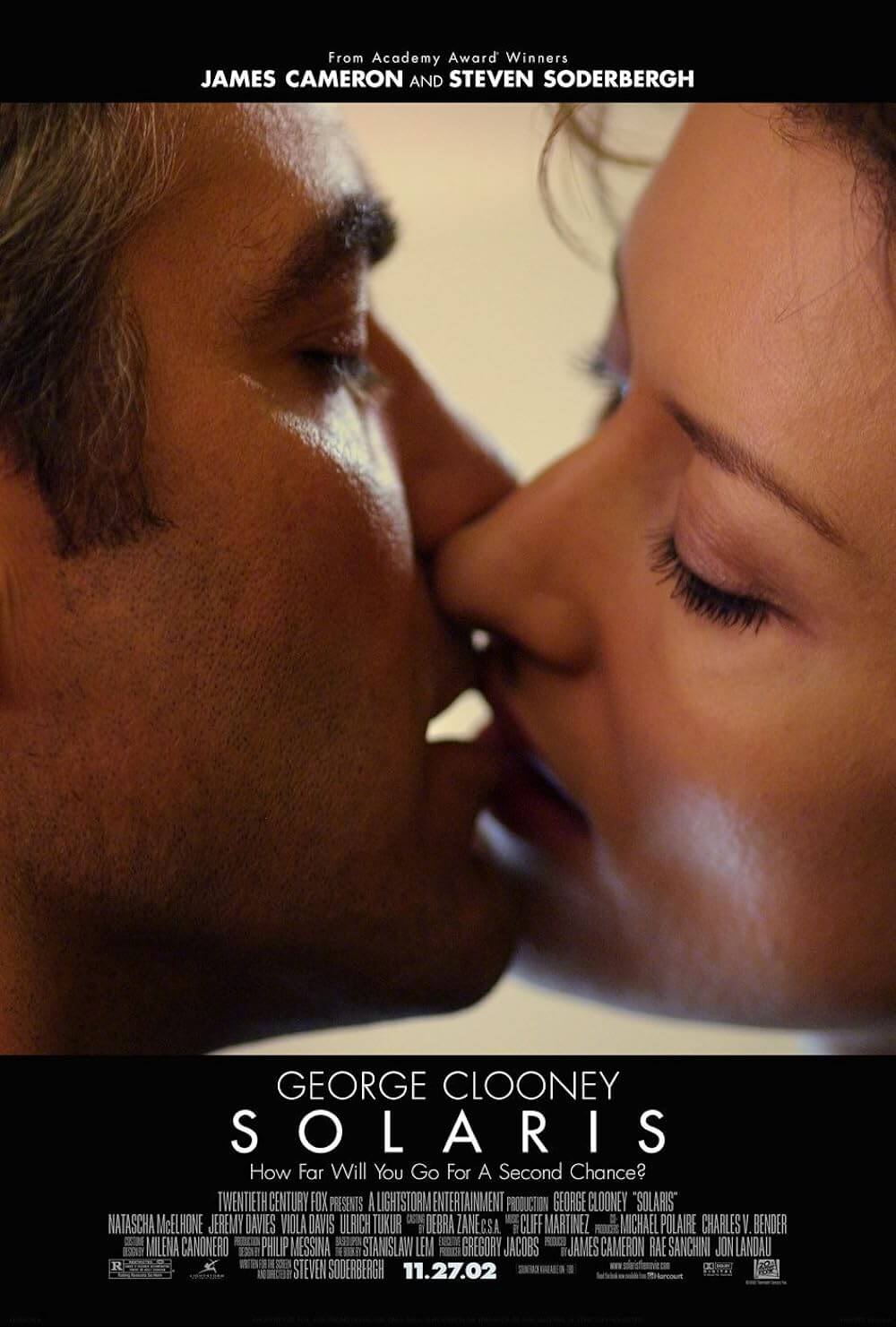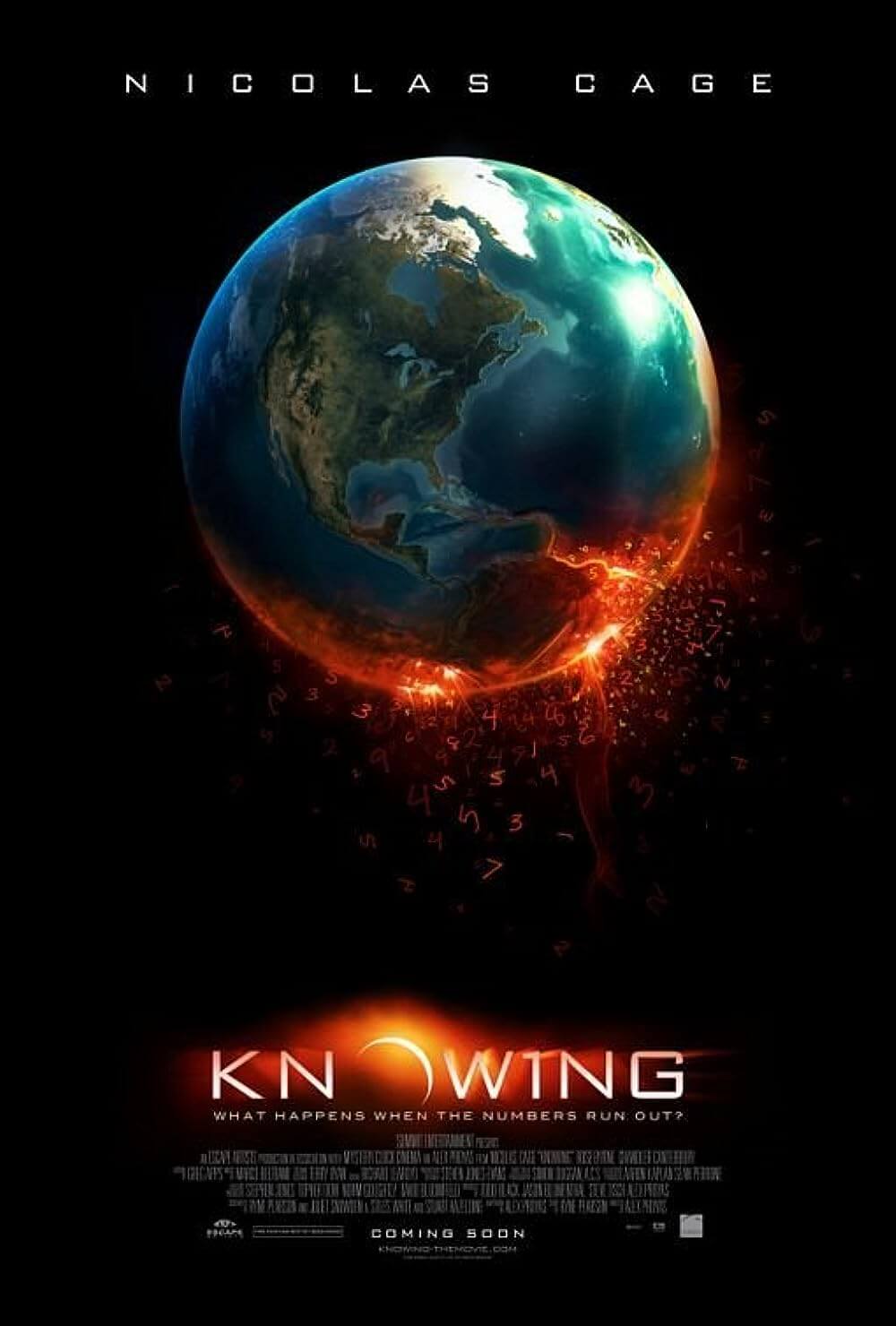The Definitives
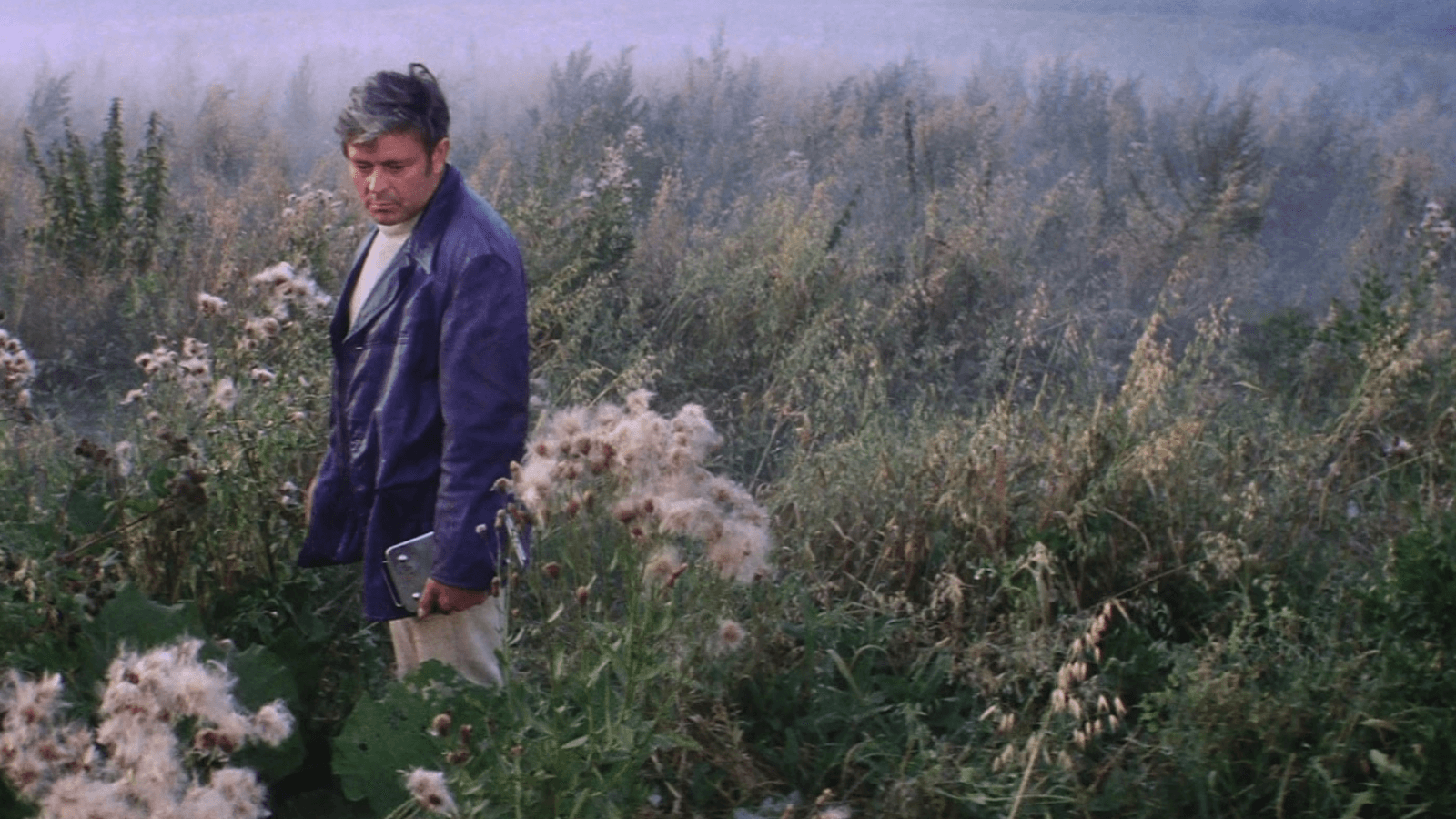
Solaris
Essay by Brian Eggert |
Time is a perception, a way of organizing and understanding through units that divide and compile the universe into sometimes arbitrary formations. Russian filmmaker Andrei Tarkovsky explored temporality in a manner not unlike Shakespeare’s Hamlet, the Prince of Denmark, who, just moments after seeing his father’s ghost and realizing the earthly and spatial planes are not aligned, observed, “Time is out of joint.” Given the perceptive nature of time and its relation to space in cinema, more than merely time is out of joint in film; the spatiotemporal form remains displaced, illusory, and assembled through the filmmaking process of image-making and editing. Over the seven feature-length films to his credit, Tarkovsky’s cinema explores the time-space disconnect to engage the shifting and non-linear relationships between people, places, time, and memory. This is surely the case for the protagonist of Tarkovsky’s penetrating science-fiction odyssey Solaris (1972), a film in which space and time exist in a constant state of displacement through subjective memory, fantasy, and emotion. Through theories of time and image, predominantly those of Gilles Deleuze and Tarkovsky himself, this analysis of Tarkovsky’s approach examines how the director, through his work, explores time, space, and their disjointed representation in Solaris.
Many of Tarkovsky’s characters and settings inhabit time, but they do so in dreamlike or even imagined landscapes that have no precise orientation within logical space, what for Deleuze might be represented by a “chronic non-chronological order”. Tarkovsky often wrote about the philosophies of Heraclitus or Arthur Schopenhauer in relation to time, though he did not adhere to a consistent time-philosophy for himself. What remains consistent in every Tarkovsky film is not a philosophy about time, but rather the profound treatment of time as a factor in both his formal and narrative approach, and his visual treatment of time in slow movements and pensive, unhurried shots. Tarkovsky also wrote extensively about time in texts like Sculpting in Time and Time Within Time, where he links, albeit without a steady application of his ideas, the notion of time and space “out of joint” but having a shared pattern or togetherness, associating such ideas through what has been described as “meaning-laden images whose meanings are elusive”. Whether he successfully or clearly communicates the potential metaphoric or symbolic meanings of his images remains the responsibility of the viewer to determine. Regardless, Tarkovsky gives his audience incredible imagery and onscreen time to explore it.
Tarkovsky does not operate within established form-follows-function structures of image assembly, linearity, and visual logic. As a contrast to his approach, take how classic Hollywood cinema was dependent on the movement-image according to Deleuze. The essence of movement in classic Hollywood is created as a montage that uses a consistent pattern between one movement-image connected to another through editing to create the impression of flowing time. The movement-image is the “bearer of narrative” according to Deleuze, and it facilitates linear progression through organized means. Each shot in the classical movement-image model has an incremental, and in no way consistently so, addition to the passage of time. Within this progression, characters must move within a rhythm; through that rhythm of movement, a film can establish the passage of time through a montage that is ultimately read as the present, but in actuality, it exists as a cumulative result of images in the past. Within montage, time is pieced together through multiple images piled atop one another and in relation to one another, and filmmaker-theorists like Sergei Eisenstein remained proponents of such shot discourses and their dialectical order. As Deleuze argues, “the movement-image can be perfect, but it remains amorphous, indifferent and static if it is not already deeply affected by injections of time which put montage into it, and alter movement.”
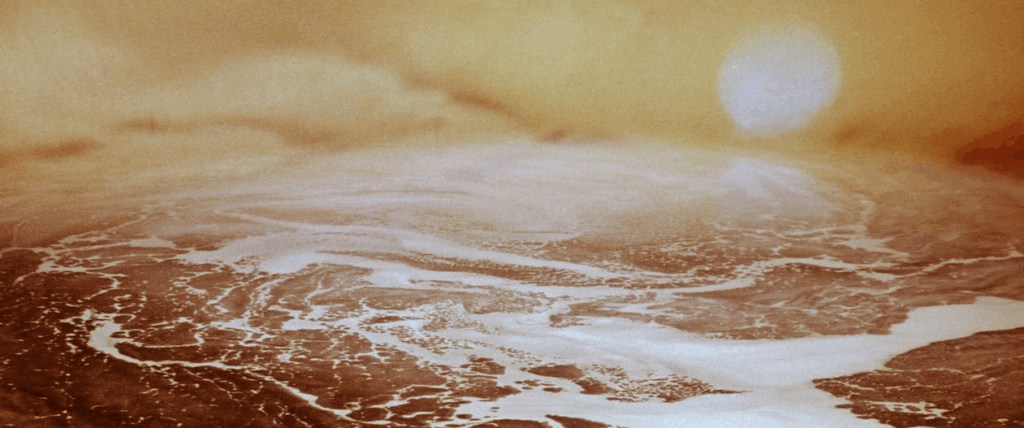
Tarkovsky concentrated less on montage than on considering the universes of space and time that inhabit a single shot, what Deleuze called the time-image. Tarkovsky believed the time-image could reveal reality with some level of objectivity; thus, edits should be hidden to prevent any interruption of time’s passage. A single shot, held for a prolonged amount of time, would reveal the true nature of time’s passage, as well as supply a thoughtful consideration of the space represented. But for a single shot to supersede montage, Deleuze maintained that “time in a shot must flow independently and, so to speak, as its own boss.” Protracted time in a shot is its own little galaxy. And while montage can connect those galaxies to create a temporal uniformity between them, and therein a continuity of time in the larger universe of the film, the individual shot can break that continuity and function as a continuum unto itself. Deleuze notes that Tarkovsky denies that “cinema is like working with uniques, even if these are relative and of different orders: montage is not a unique of a higher order which exercises power over unit-shots and which would thereby endow movement-images with time as a new quality.” Indeed, Tarkovsky believes in the power of the shot unto itself.
Solaris remains Tarkovsky’s most appropriate work to discuss the effects of time in his filmmaking, as the narrative presents emblematic representations of his approach. Based on the 1961 novel by Polish author Stanisław Lem, the film takes place in a future where space travel has led to the exploration of planets in other solar systems. The study of an ocean planet called Solaris has become unproductive over time, and the orbiting station’s former crew of eighty-five scientists has been reduced to a skeletal three. Kris Kelvin (Donatas Banionis), a psychologist, has been tasked with evaluating the current scientific study of Solaris to determine its future. But the station experiences the strange phenomena from the fluid planet below that defy spatiotemporal rules established by science and the mind. As Kelvin learns not long after his arrival, the planet reproduces humans based on the memories of those nearby, creating so-called “guests” that reflect the troubled preoccupations of the station astronauts—a notion evoking thoughts of Fyodor Dostoyevsky’s story The Double, except the doubles spring from memories and form copies of the astronauts’ lost loved ones. When Kelvin’s late wife, Hari (Natalya Bondarchuk), who committed suicide ten years earlier, returns in guest form and begins to evolve feelings and memories of her own, she becomes more than a reflection of the past. Reality and phantasmagoria exist in the same moment, becoming a crystallization of past, present, and future, both imagined and experienced.
Through this basic setup, Deleuze’s time-image finds a unique metaphoric corporeality through which to explore Tarkovsky’s approach and Deleuze’s concepts. Much of the film early on involves Kelvin studying reports from the station on Earth, preparing to leave his home planet and sizing up his mission. When colleague Henri Berton (Vladislav Dvorzhetsky), a former scientist and astronaut, visits Kelvin, they debate how to handle Solaris. Kelvin must assess whether to shut down the Solaris station or alter the research by bombarding the living surface with radiation to examine the outcome. They watch footage from Berton’s immediate return from Solaris years earlier. Berton claims to have seen the haunting image of a four-meter child on the surface of the planet. Through strange imagery bound by science fiction, Tarkovsky attempts to represent how his characters perceive space and time, and he employs cinematic and genre tactics to achieve this. For example, though the early part of the film is largely chronological and straightforward, much of the film’s latter half blends memory, fantasy, and Kelvin’s troubled emotional state as he reconciles how to handle two “guests” in the form of Hari—someone long since dead, thought to be merely a memory, but with a spatial reality in the present.
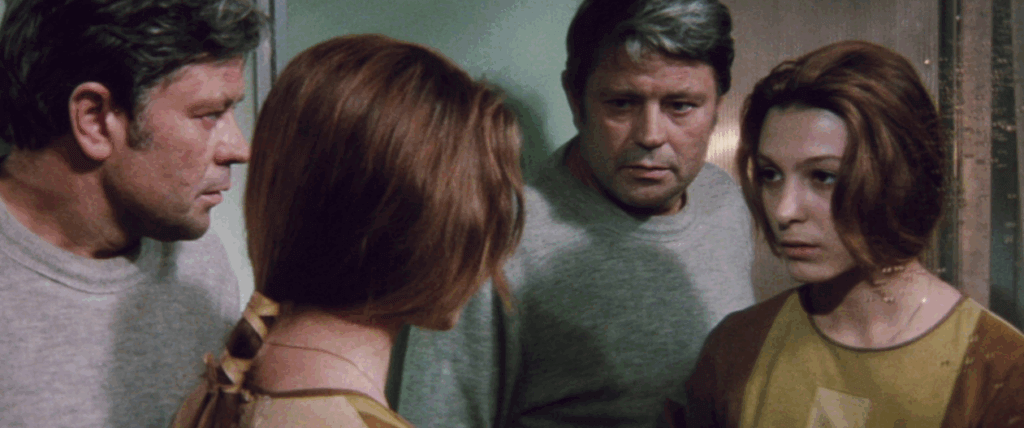
To be sure, the interrelation of space and time cannot be denied in Solaris; they cannot exist without one another, nor can they exist independently of Tarkovsky’s filmmaking. Consistently throughout the film, Tarkovsky dissects space and time in distinct ways: his creation of time through a single, long shot; his spatialization of time—a component which “organizes spatial elements in time” through patterns of movement within a single shot; and his use of color, which represents decay and the effect on the body over time. Through each of these methods, Tarkovsky attempts to recreate the experience of time. But given the nature of film, he can only approximate space and time in deliberately prolonged albeit fragmentary moments. There will always come the point in any Tarkovsky film where the cut must occur, and with that edit, the continuity created for space and time within the film cease to be. The viewer must reacclimate to a new angle, a new place and moment in time, however seamlessly it may be for the viewer to adjust. Tarkovsky told an interviewer, “I am seeking a principle of montage, which would permit me to show the subjective logic—the thought, the dream, the memory—instead of the logic of the subject […] which are not necessarily linked logically.” In other words, Tarkovsky’s exploration of space and time is rooted in his characters’ perceptions.
To show how his characters perceive, Tarkovsky transmits the passage of time within a single, long shot. Watching a long shot allows the viewer to consider time within itself, setting aside narrative to a degree, so that time remains at the forefront of the shot context. Through the long shot, time is revealed as a temporal realm where physical space, along with its individual components (characters, objects, natural settings, etc.), are experienced. Long takes (not to be confused with tracking shots, where a mounted camera follows the scene on a track) capture something resembling actual time through a shot that lasts far longer than typical editing strategies might allow, “striving toward continuous presence,” wrote Tarkovsky scholar Nariman Skakov. Consider the film’s opening shot, set at Kelvin’s parental home on Earth. He stares into a pond, the weeds swaying in the rhythms of the water. The shot pushes inward, filling the screen with the weeds’ tendrils, almost like tentacles moving, followed by another long shot of Kelvin watching them. Perhaps he wants to savor earthly phenomena before he leaves for Solaris, and so he washes his hands in the pond and later allows rain to fall on his face (a poetic and symbolic use of water remains a fixture in Tarkovsky’s films). Tarkovsky ruminates on Kelvin as he wanders the grounds of the property, observing the fog-laden field or a nearby willow tree, placing the viewer in his leisurely observation of Nature, and his simultaneous connection with an inability to fully understand its sublimity.
Deleuze notes that montage can occur “in the depth of an image” without the need of linking images through editing, supporting Tarkovsky’s view that “time flows in the shot” which conveys the “pressure of time.” The pressure of time becomes a moment lived, an experience that can be related to throughout the expanse of the narrative, making cognitive—but not cinematic—associations between disparate moments in the film. When Kelvin ponders his family’s pond, an association to that moment occurs later as he arrives at the Solaris station. There, he watches the planet’s fluid surface move and fluctuate, and the viewer recalls the first scenes around Kelvin’s parental home. The natural state of Solaris, when examined with the same prolonged consideration of the pond weeds, remains impenetrable and impossible to understand—but Kelvin’s same uncertainty saturates both sequences. Early on, he is uncertain about his forthcoming mission into space; when he arrives at the station, he struggles to reconcile his emotions with his mind as a scientist. Tarkovsky creates parallels through space and time, linking the two feelings by holding the shot, and the feeling of uncertainty is carried through to the viewer. But the association does not demand visual links—such as, say, an edit that flashes back to the pond—to connect the images and concepts.
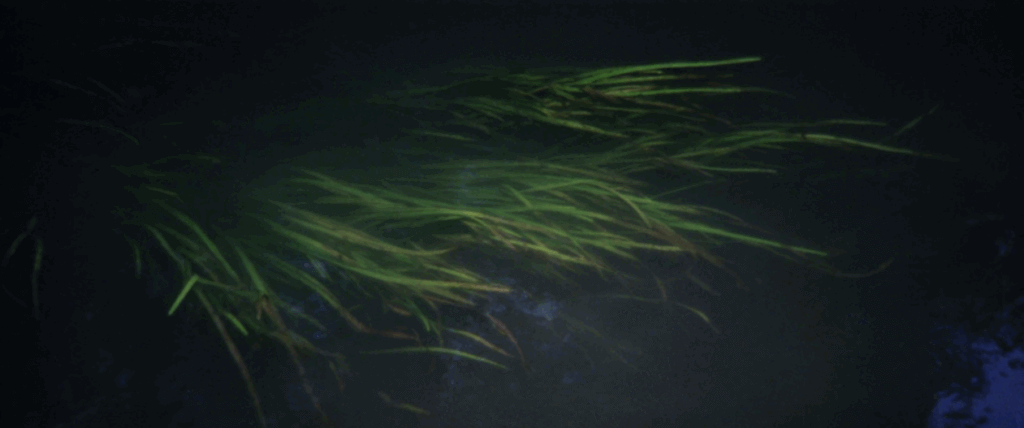
In this way, Tarkovsky’s use of images and time aligns with Deleuze by capturing several spatial centers of time within a single image. To understand this concept, time must be broken down and reconfigured from the way human beings have understood its linear distinction (in seconds, minutes, hours, days, weeks, months, years, and so forth). The time-image transcends such structures of temporal logic by suggesting a vast accumulation of knowledge or awareness across multiple planes. The time-image is transcendental, according to Deleuze, presenting time in a “pure state,” but not through its relationship to other images: “It is no longer time which is subordinate to movement; it is movement which subordinates itself to time,” Deleuze argues. In a long shot, the time-image places the image and movement within material time, communicating a progression of time that would otherwise be made through the procession of images in a montage. The time-image occupies space in time rather than adjusting and reorganizing the space through montage.
Skakov notes that time is “captured, imprinted, and preserved in its natural forms and manifestations” in Tarkovsky’s use of the long shot, and the audience’s ability to observe the passage of time remains the director’s primary instrument. The time-image provides a device through which the viewer can observe the tangible and its textures, observing the film’s reality, whether it is a natural reality or the perceived reality of his characters. By contrast, in a typical or classical filmmaking style, this moment becomes nearly impossible to consider given the necessity of editing or dependence on montage—the previous image always informs the current image, and the viewer of the current image anticipates what will follow. Deleuze suggests that direct cinema documentaries also attempt to place the viewer in the now-moment through observation and a certain amount of distance from the subject; however, Deleuze seems too dependent on the faux objectivity of documentary filmmaking. Whereas, the long takes of a time-image are extremely effective, depending on the context, at limiting time to the present and imbuing scenes with a meditative consequence.
For instance, after Berton leaves Kelvin’s family home, he forgets something and calls from the road—he forgot to mention that the four-meter child he saw on Solaris, aside from its colossal height, resembled the orphaned son of a colleague, foreshadowing the phenomenon of “guests” on Solaris station. A moment later, the shot follows Berton on a motorway, driving with his son in the back seat. They travel in silence, aside from the noise of the road and passing vehicles. A series of long shots follows Berton’s car through streams of traffic and merging lanes, the images muted to an almost industrial monochrome following what Mark Bould described as a “permanent drone of traffic” that continues onward for several minutes of screentime. Cars drive through endless passages and tunnels, serving as portals to another part of the massive cityscape shot in Tokyo’s Akasaka and Iikura districts. Although Tarkovsky originally intended for the backdrop to represent a futuristic metropolis, the familiar layout and patterns of roads, concrete, street, and automobile lights bring to mind the natural movement of the waterweeds in the Kelvin family pond. From this association, the viewer can link Nature with the artificial, the pond with the road, and thus bring into question the nature of Solaris itself. This sequence, comprised of several long shots, also forces the viewer to consider the urgent present without concerns of what will come next in the film’s shot progression; instead, Tarkovsky impels the viewer to consider the context of the scene, the mysteries that await on Solaris, and time itself.
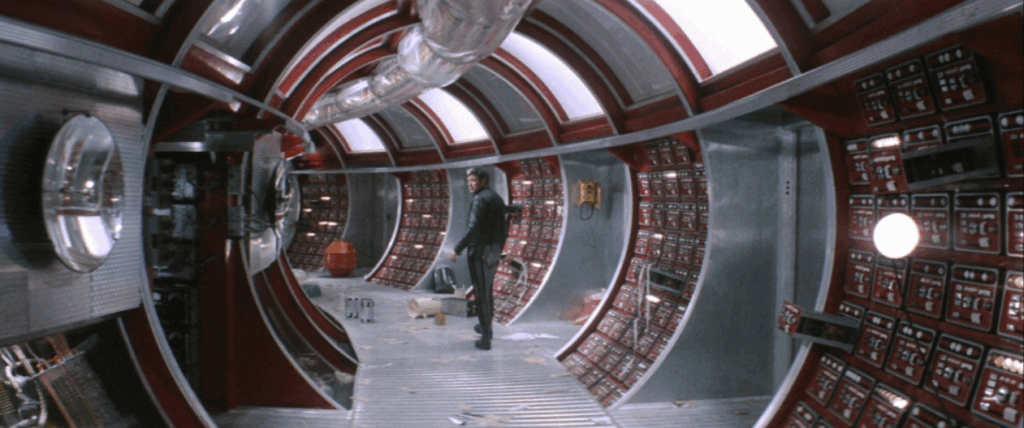
Curiously, Tarkovsky remains uninterested in exploring long science-fiction travel scenes, which is quite the opposite approach of his contemporaries, such as Stanley Kubrick’s use of travel in 2001: A Space Odyssey (1968) or the famous opening sequence of George Lucas’ Star Wars (1977). Kelvin’s eventual trip to Solaris station occupies just a few seconds of screentime, and the bubble-like orb of his spaceship barely registers before he docks at the station. Due to frequent and mysterious experiences around Solaris like Berton’s, the station now houses just three scientists: the astrobiologist Sartorius (Anatoli Solonitsyn), a cyberneticist Snaut (Jüri Järvet), and a physiologist named Gibarian (Sos Sargsyan) who has just killed himself when Kelvin arrives. Tarkovsky acclimates the viewer to the setting by touring the hollow docking chamber, empty corridors strewed with garbage and debris, and odd figures moving out of sight in the distance. Each shot in this sequence lasts 20 to 30 seconds or more, whereas, in conventional or contemporary cinema, shots last two or three seconds on average. Tarkovsky’s use of time in Solaris is not to revel in science-fiction genre tropes or his expert arrangement of them; rather, he felt that the genre origins of Lem’s novel limited the film due to its requirement for “genre details.”
Instead, Tarkovsky uses long takes to consider the effects of time through the observation of its consequences. Tarkovsky believed that showing decay through time was essential to film, especially color film, and a cinematographer using film color should do so with decaying textures in mind. Conversely, for more of what Tarkovsky called the “naturalistic truth of art,” the director used monochrome. The color images in the film that resonate most involve crumbling autumn leaves, weathered surfaces in Kelvin’s parents’ home, or the timeworn appearance of Solaris station. However, his most dramatic use of time through color changes involves his treatment of the human body. The connection between color, age, and decay is never more apparent in Solaris than when Kelvin’s guest, the copy of his late wife Hari, is reminded of her artificial state by Sartorius; she proceeds to commit suicide by imbibing liquid oxygen. Kelvin finds her body, dead and partly frozen in gray-blue hues. But guests cannot die; Solaris always brings them back to life. The scene unfolds as color returns to Hari’s body, blue hues warm into pinks and red, and she writhes horrifically, convulsing back to life. Rather than showing the effect of time through progressive decay, the impact of time on the body is captured in reverse, through healing, as the planet returns its offspring to a living state. In Deleuze’s terms, Kelvin’s guest is not an “instrument of action” who degenerates within time’s persistent movement; rather, she is a “developer of time” as signs of the effect of time appear on her body.
Through the metaphor of Solaris’ guest-creations, the time-image transcends mere chronology, becoming crystallized; the liquid forms of chronological time blend with memory and emotion into a hardened physical manifestation. Deleuze acknowledges that a time-image does not necessarily suggest a linear, forward-moving continuity: “what we call a temporal structure, or direct time-image, clearly goes beyond the purely empirical succession of time.” A time-image can occupy multiple states at once, embodying the present, past, and the emotion felt in those respective periods because the time-image is also a memory-image. Deleuze writes that the memory aspect of the time-image allows a “coexistence of distinct durations, or levels of duration; a single event can belong to several levels: the sheets of the past coexist in a non-chronological order.” In other words, we can experience time in the past without a formal travel device of a flashback; the memory can exist in the past and the present through the crystal-image—or as Skakov explained: a “convergence of an actual present and a virtual past image, to the extent that they can not be distinguished.” When Kelvin meets his first guest, for example, his emotional response is devastating; he reacts by convincing her to enter a shuttle and then ejecting her into space. After the second Hari replica arrives, Kelvin resigns to her inevitable presence and begins to lose himself in his fantasies and emotions toward her, projecting them onto his newly formed crystalline guest.
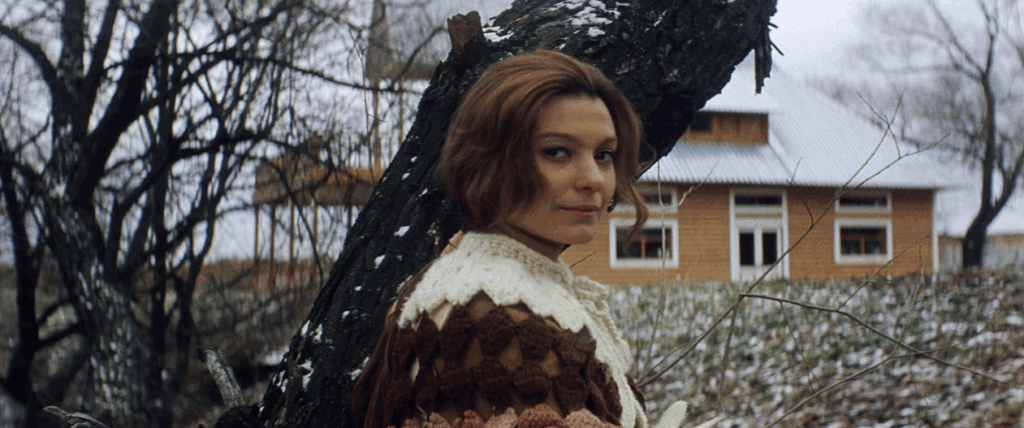
Although he rarely discussed Solaris directly, Deleuze seems to be speaking of the station and its guests when he writes, “There are crystallized spaces, when the landscapes become hallucinatory in a setting which now retains only crystalline seeds and crystallizable materials […] These are direct presentations of time.” Through the crystal-image—a crystallization of time from our understanding of it through the past, present, and future of images in an arrangement—time forms into an understanding, into a type of whole. As Deleuze notes, “By raising themselves to the indiscernibility of the real and the imaginary, the signs of the crystal go beyond all psychology of the recollection or dream, and all physics of action […] The direct time-image or the transcendental form of time is what we see in the crystal.” Deleuze’s rather metaphysical notion finds a parallel late in Solaris when the crew gathers to celebrate Snaut’s birthday in the station’s drawing room. On one of the walls appears Pieter Bruegel the Elder’s wood panel painting, “The Hunters in the Snow” (1565), originally part of a Northern Renaissance series depicting the changing seasons throughout the year. Hari stares at the image, considering the significance of time; she loses herself in the moment until, all at once, and quite symbolically, the station loses gravity. This moment of weightlessness merges ideas of memory, image, and emotion as Kelvin and Hari embrace, floating in zero gravity. The next shot of the planet’s surface, the blue and yellow Solaris sludge, suggests that to be in the presence of the planet is not unlike drifting in Deleuze’s “direct presentation” of both “a present which is passing and a past which is preserved.”
Through their crystallization, the guests embody Deleuze’s ideas about the recollection-image and the dream-image, or mnemosign and onirosign. The conscious planet constructs the guests on Solaris station into a living image found in the memories of those on the station, and, just as the mnemosign and onirosign, are both “actual and virtual” in the sense that they are both real and imaginary. They represent an experiential reality, a perceptual reality that is not real but perceived as such. Recollection-images draw from the past; they are not merely memories of the past, but they are infused with subsequent experiences, shaping their consequence. In this sense, the guests are the living embodiment of a flashback or mnemosign. Dream-images exist beyond time and enter the fantastical—a connection made throughout Solaris in its many references to Miguel de Cervantes’ novel Don Quixote (1605), which appears in the Solaris station’s library (it passes by the camera in the scene of zero gravity) and is quoted in the film. The novel’s hallucinatory hero, who sees windmills as vicious monsters, mirrors Kelvin, who eventually sees his wife, and not a Solaris-produced guest, in the facsimile of Hari. Occupying Kelvin’s perspective through an onirosign, the viewer sees Kelvin’s increasingly real phantoms and cannot distinguish them from reality.
In the final sequence of the film, Kelvin ponders whether to remain on the station with his Hari-guest or return to Earth, while regarding a box of Earth soil he brought along to Solaris—in which a plant has since germinated. Cut to the floating weeds of Kelvin’s family pond. At this moment, the shot has become an onirosign, even if the viewer is unaware of it yet. The scene appears to consist of time-images of Kelvin, much like the first scenes in the film, exploring the property of his family’s home. Rain falls as Kelvin finds his father standing inside the house, where, surreally, it also rains. Kelvin falls to his knees and embraces his father in an image recalling Rembrandt’s Return of the Prodigal Son (c.1667), feeling as though he has returned home. That is, until the shot pulls back to reveal that Kelvin stands on an island on Solaris—a place created for him by the planet, where the rules of space and time seem illegible and indecipherable beyond the purely perceptive, informed by his memories and unconscious. The sequence contains an artificial continuity, an imaginary landscape that alternates between the concepts of the mnemosign and onirosign. Tarkovsky’s hallucinatory images leave the viewer to question what we have seen, and whether Kelvin or Solaris produces these images.
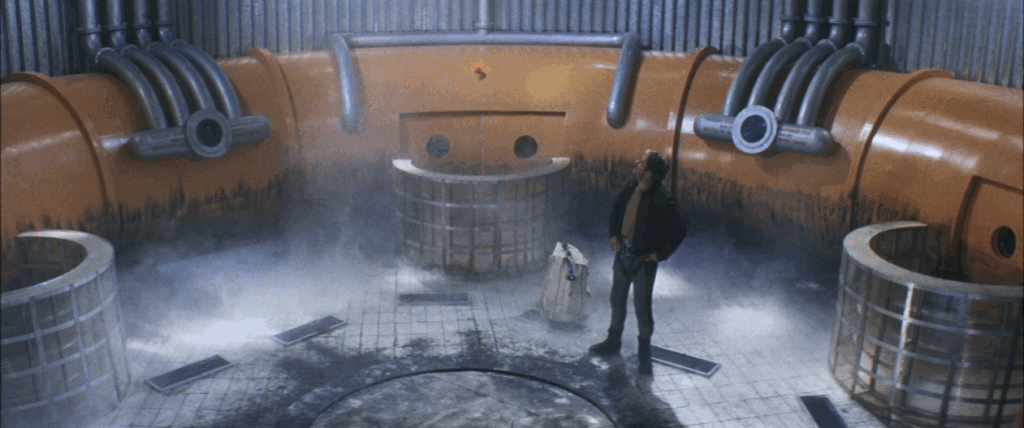
As suggested above, Tarkovsky uses the narrative and genre of Solaris to facilitate his use of time-images, and their related subtypes, ruminating on how Kelvin’s mind remains divided between Earth and the Solaris station at the same time, between memory and the present, between reality and his guest-fantasy. Writing about science fiction, Susan Sontag argues that the genre’s ambitions reside in lifting its audience “out of the unbearably humdrum” to “normalize the psychologically unbearable,” and in doing so, both reflect anxieties and relieve them. Tarkovsky uses science fiction for the exact opposite purpose. The production design of the Solaris station looks routine and unimpressive, while the psychological effects of the science fiction tear away at Kelvin throughout the film, until the final sequence finds him lost somewhere between the surface of Solaris and his own mind. Skokov notes that Tarkovsky uses the science-fiction ideas behind Lem’s novel to create unique formal “spatiotemporal displacements” through the shot, thus relating and contrasting time-images with the “internal register” that facilitates crystal-images, recollection-images, and dream-images throughout the film.
Solaris exists on several spatial, temporal, and fantastic levels at once and, as Bould notes, while watching the film, it becomes “less important (or possible) to distinguish reality from imagination than to manage the various levels of memory or fantasy.” Tarkovsky employs images to transcend space and time, rendering the elusive connection between the human mind and an alien planet whose consciousness invades the film’s characters. Tarkovsky’s use of long, contemplative, and sometimes burdensome shots has made his films essential texts for understanding time-images as Deleuze defines them and their complex, multifaceted uses as “duration-images, change-images, relation-images, volume-images, which are beyond movement itself.” Deleuze believes that only lesser films contain time-images set only in the present; superior films employ time-images that exist on multiple planes at once, representing a convergence of past, present, and future in a single shot. From Kelvin’s memories to the manifestations of the alien planet, much of Solaris dwells in the boundless, unconscious, and otherworldly spaces that Deleuze yearns to see, often representing them in both formal and metaphorical terms that enable equally boundless contemplation.
Bibliography:
Bould, Mark. Solaris. BFI Film Classics. Palgrave Macmillan, 2014.
Deleuze, Gilles. “Preface.” Critical Visions in Film Theory: Classic and Contemporary Readings. Edited by Corrigan, Timothy et al. Bedford/St. Martin’s, 2011, pp. 185-188.
—. Cinema 1: The Movement-Image. Trans. Hugh Tomlinson and Robert Galeta. Columbia University Press, 1986.
—. Cinema 2: The Time-Image. Trans. Hugh Tomlinson and Robert Galeta. Minneapolis: University of Minnesota Press, 1989.
Hoberman, J. and Gideon Bachmanm. “Between Two Worlds.” Andrei Tarkovsky: Interviews. Edited by Gianvito, John. University of Mississippi Press, 2006.
Skakov, Nariman. The Cinema of Tarkovsky: Labyrinths of Space and Time. I.B. Tauris, 2012.
Sontag, Susan. Against Interpretation. Picador, 1994.
Tarkovsky, Andrei. Sculpting in Time: Reflections on the Cinema. Trans. K. Hunter-Blair. Austin: University of Texas Press, 2003.
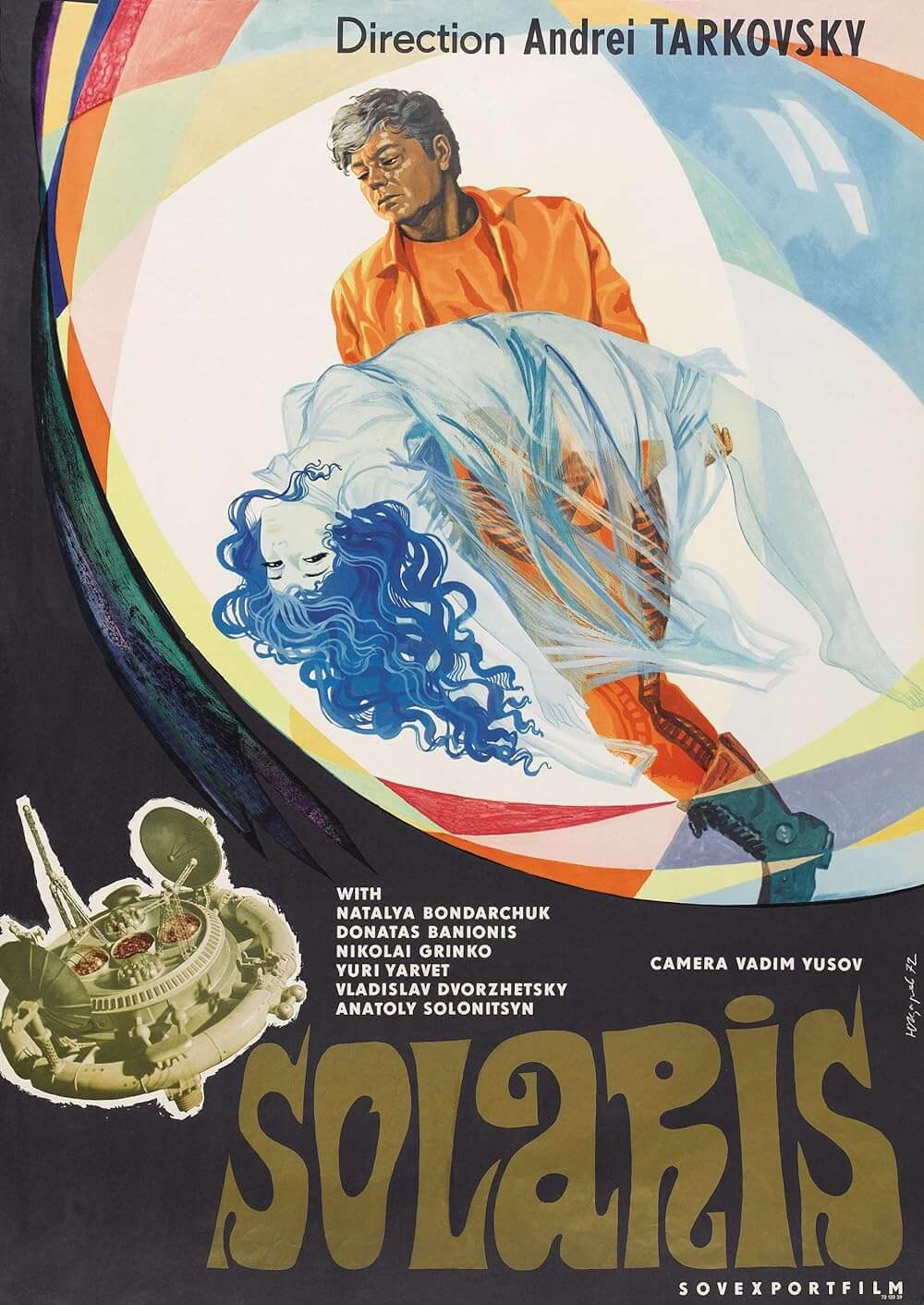
Thank You for Supporting Independent Film Criticism
If the work on DFR has added something meaningful to your love of movies, please consider supporting it.
Here are a few ways to show your support: make a one-time donation, join DFR’s Patreon for access to exclusive writing, or show your support in other ways.
Your contribution helps keep this site running independently. However you choose to support the site, please know that it’s appreciated.
Thank you for reading, and for making this work possible.
Brian Eggert | Critic, Founder
Deep Focus Review


